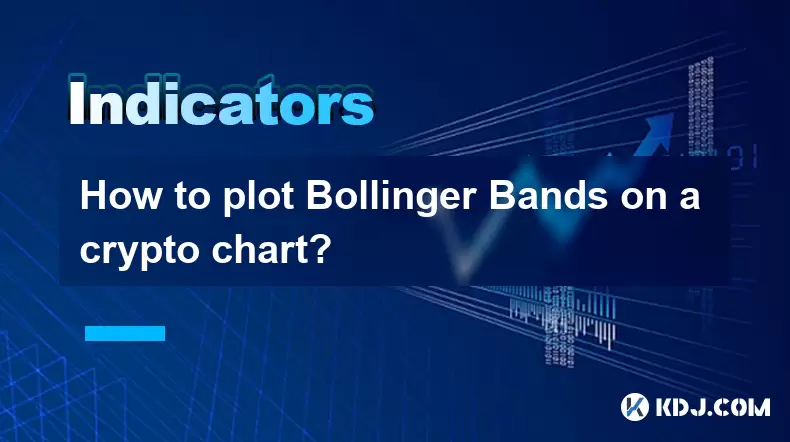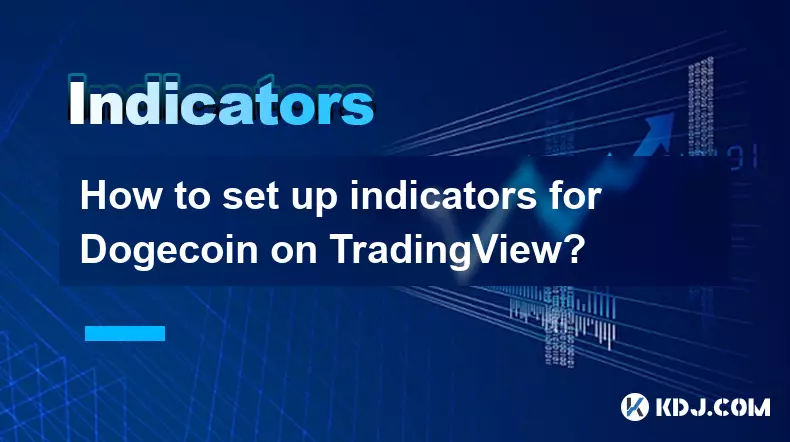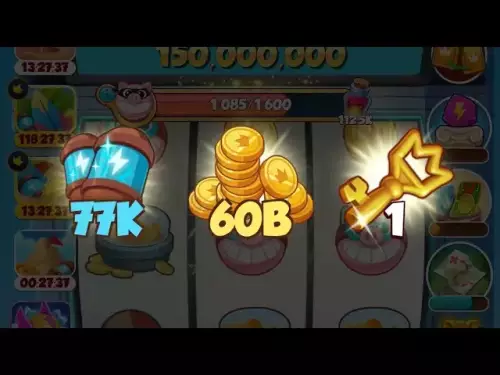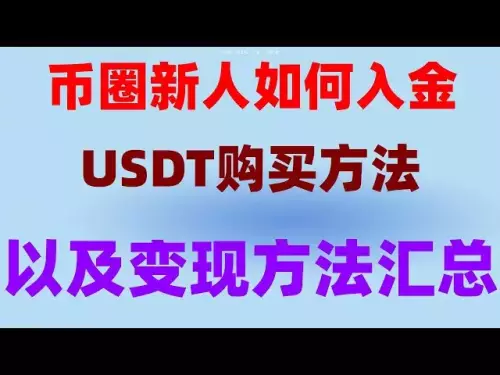-
 Bitcoin
Bitcoin $110300
-1.87% -
 Ethereum
Ethereum $4440
-5.77% -
 XRP
XRP $2.928
-2.35% -
 Tether USDt
Tether USDt $1.000
0.04% -
 BNB
BNB $846.6
-3.56% -
 Solana
Solana $189.5
-7.38% -
 USDC
USDC $0.9999
-0.01% -
 TRON
TRON $0.3451
-3.55% -
 Dogecoin
Dogecoin $0.2120
-6.80% -
 Cardano
Cardano $0.8440
-6.51% -
 Chainlink
Chainlink $23.36
-9.64% -
 Hyperliquid
Hyperliquid $45.37
-0.87% -
 Stellar
Stellar $0.3912
-2.88% -
 Ethena USDe
Ethena USDe $1.001
0.01% -
 Sui
Sui $3.427
-5.42% -
 Bitcoin Cash
Bitcoin Cash $541.9
-6.19% -
 Hedera
Hedera $0.2361
-3.53% -
 Avalanche
Avalanche $23.47
-6.78% -
 UNUS SED LEO
UNUS SED LEO $9.576
-0.13% -
 Litecoin
Litecoin $110.9
-4.17% -
 Toncoin
Toncoin $3.164
-3.92% -
 Shiba Inu
Shiba Inu $0.00001221
-4.42% -
 Uniswap
Uniswap $9.814
-8.21% -
 Polkadot
Polkadot $3.810
-5.78% -
 Cronos
Cronos $0.1600
0.16% -
 Dai
Dai $1.000
0.02% -
 Bitget Token
Bitget Token $4.507
-2.31% -
 Aave
Aave $332.1
-2.83% -
 Monero
Monero $265.5
-3.96% -
 Ethena
Ethena $0.6289
-6.04%
How to plot Bollinger Bands on a crypto chart?
Bollinger Bands help crypto traders identify volatility, breakouts, and overbought/oversold conditions using a 20-period SMA and upper/lower standard deviation bands.
Aug 04, 2025 at 08:57 pm

Understanding Bollinger Bands in Cryptocurrency Trading
Bollinger Bands are a widely used technical analysis tool designed to measure market volatility and identify potential price breakouts in cryptocurrency trading. Developed by John Bollinger in the 1980s, this indicator consists of three lines plotted on a price chart: a simple moving average (SMA) in the middle, and two outer bands that represent standard deviations above and below the SMA. These bands expand and contract based on market volatility. When the bands widen, it indicates higher volatility; when they narrow, it suggests lower volatility. In the context of cryptocurrencies like Bitcoin or Ethereum, which are known for their price swings, Bollinger Bands help traders identify overbought or oversold conditions.
Components of Bollinger Bands
The Bollinger Bands indicator comprises three key elements:
- The middle band, which is typically a 20-period simple moving average (SMA) of the closing prices.
- The upper band, calculated as the middle band plus two standard deviations of the price data.
- The lower band, calculated as the middle band minus two standard deviations.
The standard settings are 20 periods and 2 standard deviations, but traders can adjust these values based on their strategy. For instance, shorter timeframes like 10 periods may be used for more sensitive signals in fast-moving crypto markets. The formula for each component is:
- Middle Band = SMA(20)
- Upper Band = SMA(20) + (2 × Standard Deviation)
- Lower Band = SMA(20) − (2 × Standard Deviation)
These calculations are automated on most trading platforms, so manual computation is not required.
Plotting Bollinger Bands on Popular Crypto Charting Platforms
Most cryptocurrency trading platforms and charting tools support Bollinger Bands as a built-in indicator. Here’s how to add them on major platforms:
- On TradingView, navigate to the chart of your chosen cryptocurrency (e.g., BTC/USDT). Click on the “Indicators” button at the top of the chart. In the search bar, type “Bollinger Bands.” Select the indicator from the list. The default settings (20, 2) will be applied automatically. The bands will appear on your chart immediately.
- On Binance, open the trading interface for any crypto pair. Click on the “Chart” tab. At the top, find the “Indicators” menu. Search for “Bollinger Bands” and click to apply. The bands will overlay on the price chart.
- On Coinbase Advanced Trade, access the charting section. Click the “f(x)” icon to open the indicator library. Search for Bollinger Bands and select it. Confirm the settings and the indicator will be plotted.
Once applied, you can customize the period, deviation multiplier, and visual appearance (color, line thickness) through the indicator’s settings panel.
Interpreting Bollinger Bands in Crypto Markets
Traders use Bollinger Bands to assess price action and volatility in cryptocurrencies. One common signal is the “Bollinger Squeeze,” which occurs when the bands contract tightly around the price. This often precedes a sharp price movement, either up or down. In crypto markets, such squeezes can lead to significant breakouts due to high leverage and sentiment-driven trading.
Another interpretation involves price touching or crossing the bands. When the price touches the upper band, it may indicate an overbought condition, suggesting a potential pullback. Conversely, touching the lower band may signal an oversold state, hinting at a rebound. However, in strong trending markets, price can ride along one band for extended periods, so confirmation with other indicators like RSI or volume is recommended.
The position of the candlesticks relative to the bands also provides insight. For example, a bullish engulfing pattern forming near the lower band may suggest a reversal opportunity.
Customizing Bollinger Bands for Different Crypto Timeframes
Adjusting Bollinger Bands settings can improve their effectiveness across various trading styles. For day traders focusing on short-term movements, reducing the period to 10 or 14 can make the bands more responsive. Increasing the standard deviation to 2.5 may help filter out minor volatility spikes.
For swing traders analyzing daily or 4-hour charts, the default 20-period setting works well. On weekly charts used for long-term analysis, some traders extend the period to 50 and reduce the deviation to 1.5 to avoid excessive noise.
To modify settings on TradingView:
- Click on the Bollinger Bands label on the chart.
- Select “Settings” from the dropdown.
- Adjust the “Length” (period) and “StdDev” (standard deviation).
- Click “OK” to apply changes.
Changes take effect instantly, allowing real-time assessment of how different parameters affect the bands’ behavior.
Combining Bollinger Bands with Other Indicators
Using Bollinger Bands in isolation can lead to false signals, especially in choppy crypto markets. Combining them with complementary tools increases reliability. For example:
- Pairing with Relative Strength Index (RSI) helps confirm overbought or oversold readings when price touches the bands.
- Adding volume indicators can validate breakout attempts when price moves outside the bands.
- Using moving average crossovers can confirm trend direction when price is near the upper or lower band.
On TradingView, add RSI by searching for it in the Indicators menu. Apply it below the main chart. When the price hits the upper Bollinger Band and RSI is above 70, it strengthens the overbought case. Similarly, a lower band touch with RSI below 30 supports an oversold scenario.
Frequently Asked Questions
What does it mean when Bollinger Bands are flat?
When the bands appear flat or nearly horizontal, it indicates low volatility and a period of price consolidation. In crypto, this often precedes a breakout. Traders watch for increasing volume or candlestick patterns to anticipate the direction of the impending move.
Can Bollinger Bands be used on all cryptocurrencies?
Yes, Bollinger Bands can be applied to any cryptocurrency with sufficient trading volume and price data. They work on major coins like Bitcoin and Ethereum, as well as altcoins such as Solana or Cardano. However, on very low-volume tokens, erratic price action may reduce their reliability.
How do I reset Bollinger Bands to default settings?
To reset, locate the indicator on your chart (e.g., “BB” label). Right-click and select “Settings” or “Inputs.” Look for a “Reset” or “Restore Default” button. Click it to revert to the original 20-period, 2-standard-deviation configuration.
Is it possible to receive alerts when price touches a Bollinger Band?
Yes, platforms like TradingView allow custom alerts. Click the “Alerts” button, choose “Create Alert,” and set the condition to “Price touches Upper Bollinger Band” or “Price touches Lower Bollinger Band.” You can receive notifications via email, SMS, or pop-up.
Disclaimer:info@kdj.com
The information provided is not trading advice. kdj.com does not assume any responsibility for any investments made based on the information provided in this article. Cryptocurrencies are highly volatile and it is highly recommended that you invest with caution after thorough research!
If you believe that the content used on this website infringes your copyright, please contact us immediately (info@kdj.com) and we will delete it promptly.
- Hong Kong Stablecoin Regulations: A New Era for Crypto?
- 2025-08-26 12:50:12
- Blockchain, Crypto, and Finance: Navigating the 2025 Bull Run
- 2025-08-26 13:05:13
- Bukedea School: From Local Hopefuls to East African Football & Beach Volleyball Champs
- 2025-08-26 13:05:13
- Scaramucci, Bitcoin, and a Touch of Romeo & Juliet: A Modern Crypto Romance?
- 2025-08-26 13:25:13
- USDC, USDT, and the Stablecoin Market: A 2025 Overview
- 2025-08-26 13:25:13
- Bitcoin, Holdings, Strategy: Decoding Strategy's Bold Play
- 2025-08-26 13:45:13
Related knowledge

How to set up indicators for Dogecoin on TradingView?
Aug 25,2025 at 04:23pm
Understanding Dogecoin and TradingView1. Dogecoin, initially created as a meme-based cryptocurrency, has evolved into a widely traded digital asset. I...

What does it mean when the +DI and -DI cross frequently in the DMI indicator but the ADX is flattening?
Aug 11,2025 at 03:15am
Understanding the DMI Indicator ComponentsThe Directional Movement Index (DMI) is a technical analysis tool composed of three lines: the +DI (Positive...

What does the sudden appearance of a "dark cloud cover" candlestick pattern during an uptrend indicate?
Aug 13,2025 at 11:35am
Understanding the 'Dark Cloud Cover' Candlestick PatternThe dark cloud cover is a bearish reversal pattern in technical analysis that typically appear...

What does it mean when the moving average, MACD, and RSI all send buy signals simultaneously?
Aug 11,2025 at 01:42pm
Understanding the Convergence of Technical IndicatorsWhen the moving average, MACD, and RSI all generate buy signals at the same time, traders interpr...

What does it mean when both the KDJ indicator and the RSI show overbought signals simultaneously?
Aug 13,2025 at 11:35am
Understanding the KDJ Indicator in Cryptocurrency TradingThe KDJ indicator is a momentum oscillator derived from the Stochastic Oscillator, widely use...

What does it mean when the price is trading above the SAR indicator but the red dots are densely packed?
Aug 09,2025 at 11:49pm
Understanding the SAR Indicator and Its Visual SignalsThe SAR (Parabolic Stop and Reverse) indicator is a technical analysis tool used primarily to de...

How to set up indicators for Dogecoin on TradingView?
Aug 25,2025 at 04:23pm
Understanding Dogecoin and TradingView1. Dogecoin, initially created as a meme-based cryptocurrency, has evolved into a widely traded digital asset. I...

What does it mean when the +DI and -DI cross frequently in the DMI indicator but the ADX is flattening?
Aug 11,2025 at 03:15am
Understanding the DMI Indicator ComponentsThe Directional Movement Index (DMI) is a technical analysis tool composed of three lines: the +DI (Positive...

What does the sudden appearance of a "dark cloud cover" candlestick pattern during an uptrend indicate?
Aug 13,2025 at 11:35am
Understanding the 'Dark Cloud Cover' Candlestick PatternThe dark cloud cover is a bearish reversal pattern in technical analysis that typically appear...

What does it mean when the moving average, MACD, and RSI all send buy signals simultaneously?
Aug 11,2025 at 01:42pm
Understanding the Convergence of Technical IndicatorsWhen the moving average, MACD, and RSI all generate buy signals at the same time, traders interpr...

What does it mean when both the KDJ indicator and the RSI show overbought signals simultaneously?
Aug 13,2025 at 11:35am
Understanding the KDJ Indicator in Cryptocurrency TradingThe KDJ indicator is a momentum oscillator derived from the Stochastic Oscillator, widely use...

What does it mean when the price is trading above the SAR indicator but the red dots are densely packed?
Aug 09,2025 at 11:49pm
Understanding the SAR Indicator and Its Visual SignalsThe SAR (Parabolic Stop and Reverse) indicator is a technical analysis tool used primarily to de...
See all articles

























































































